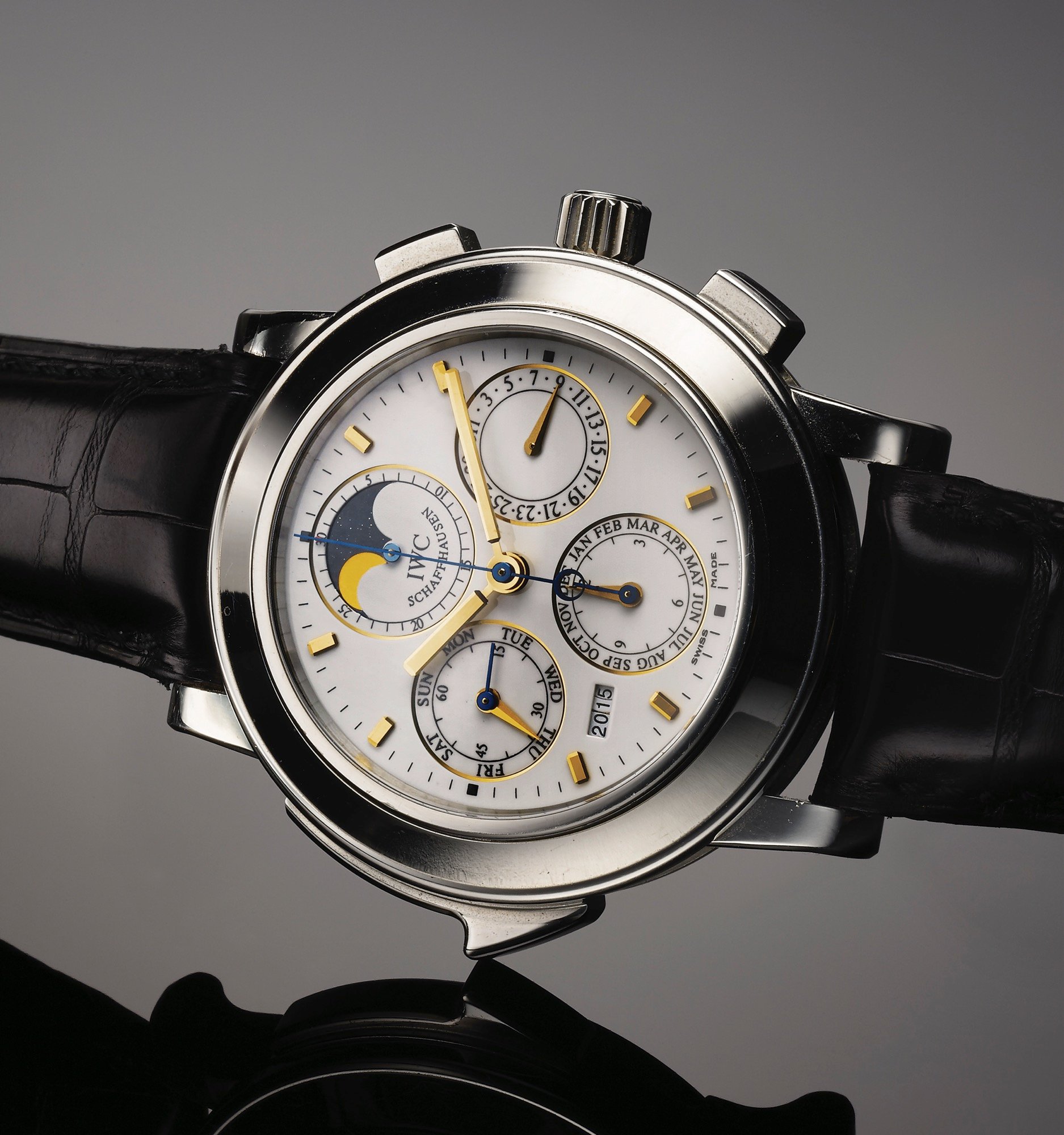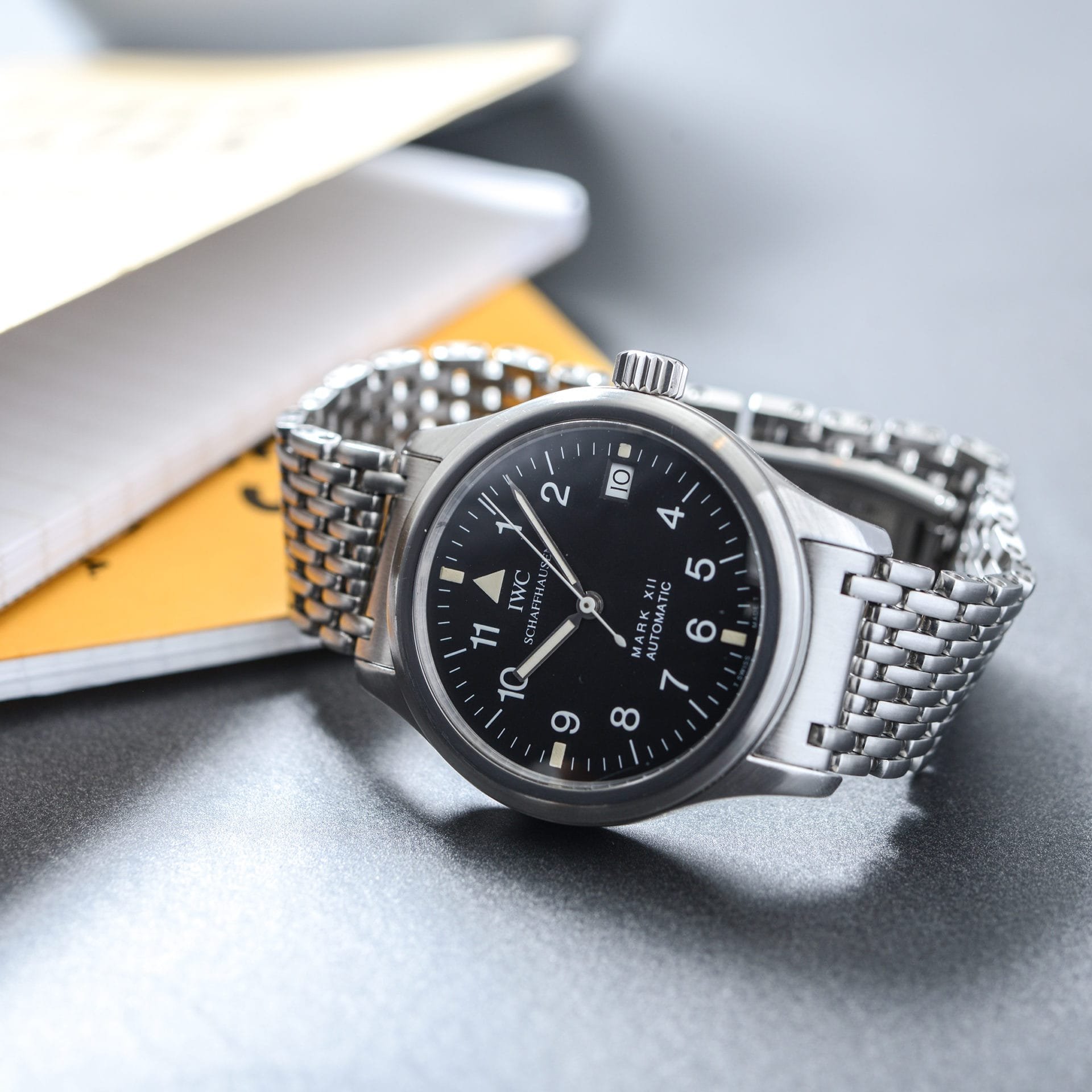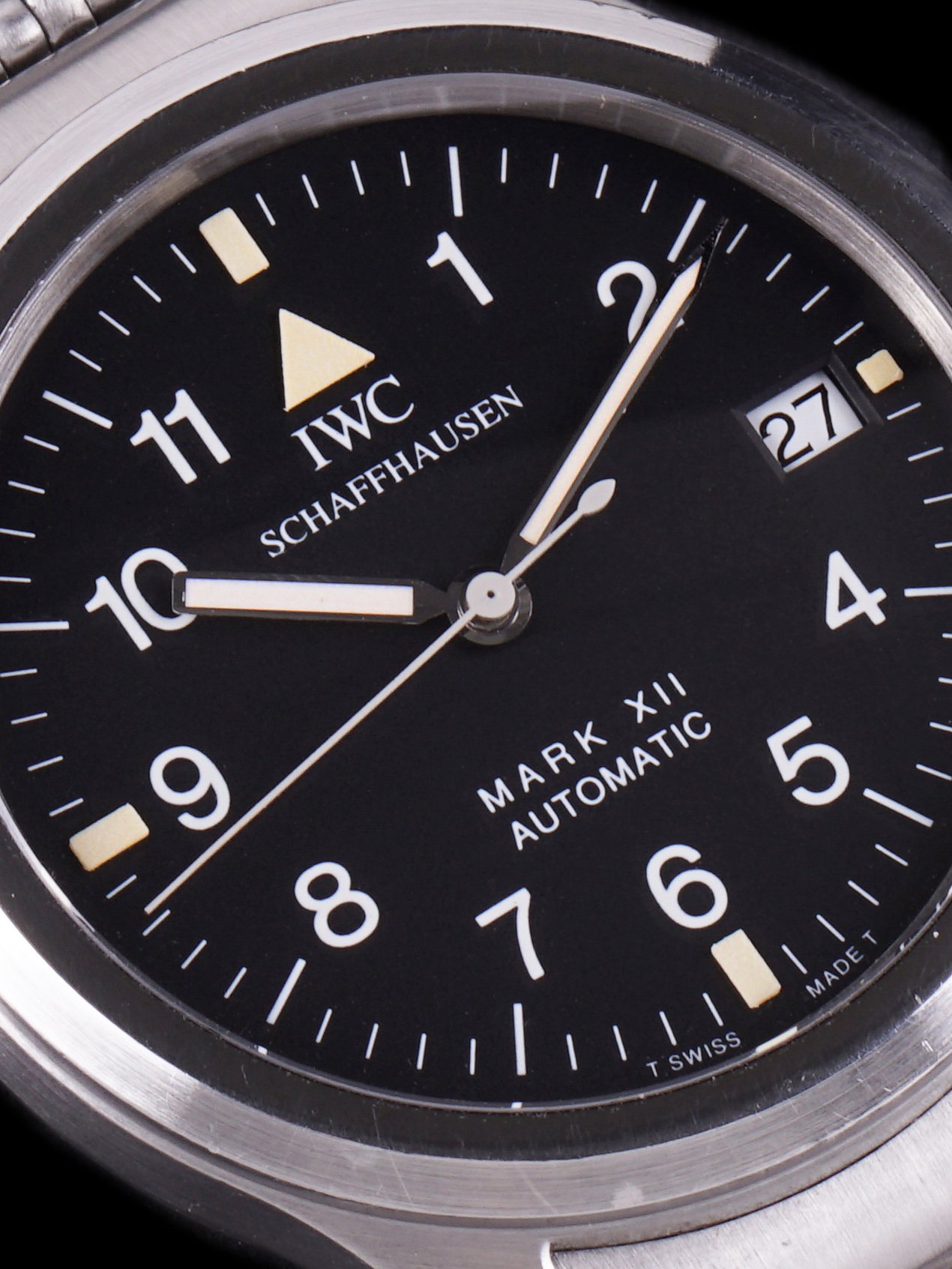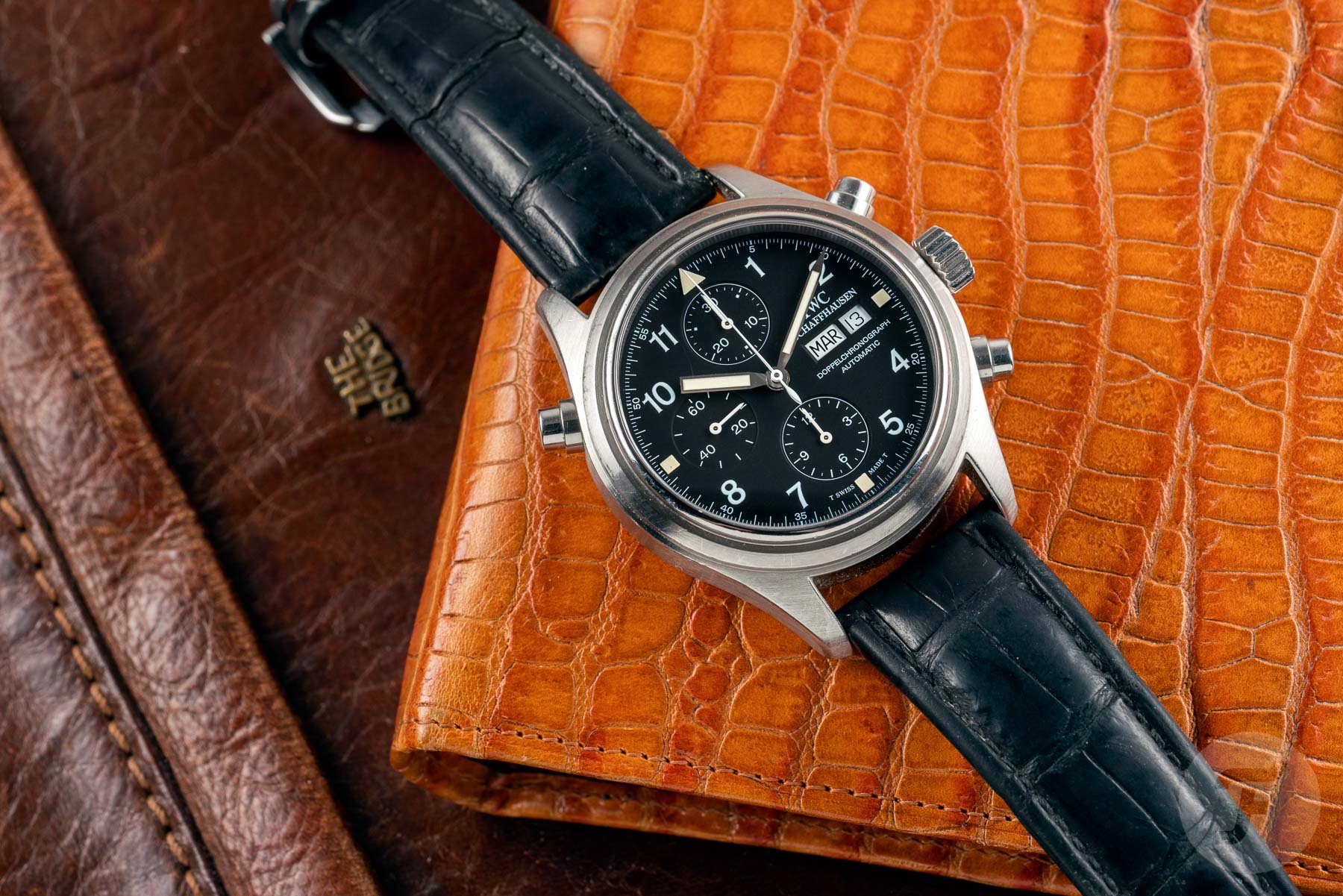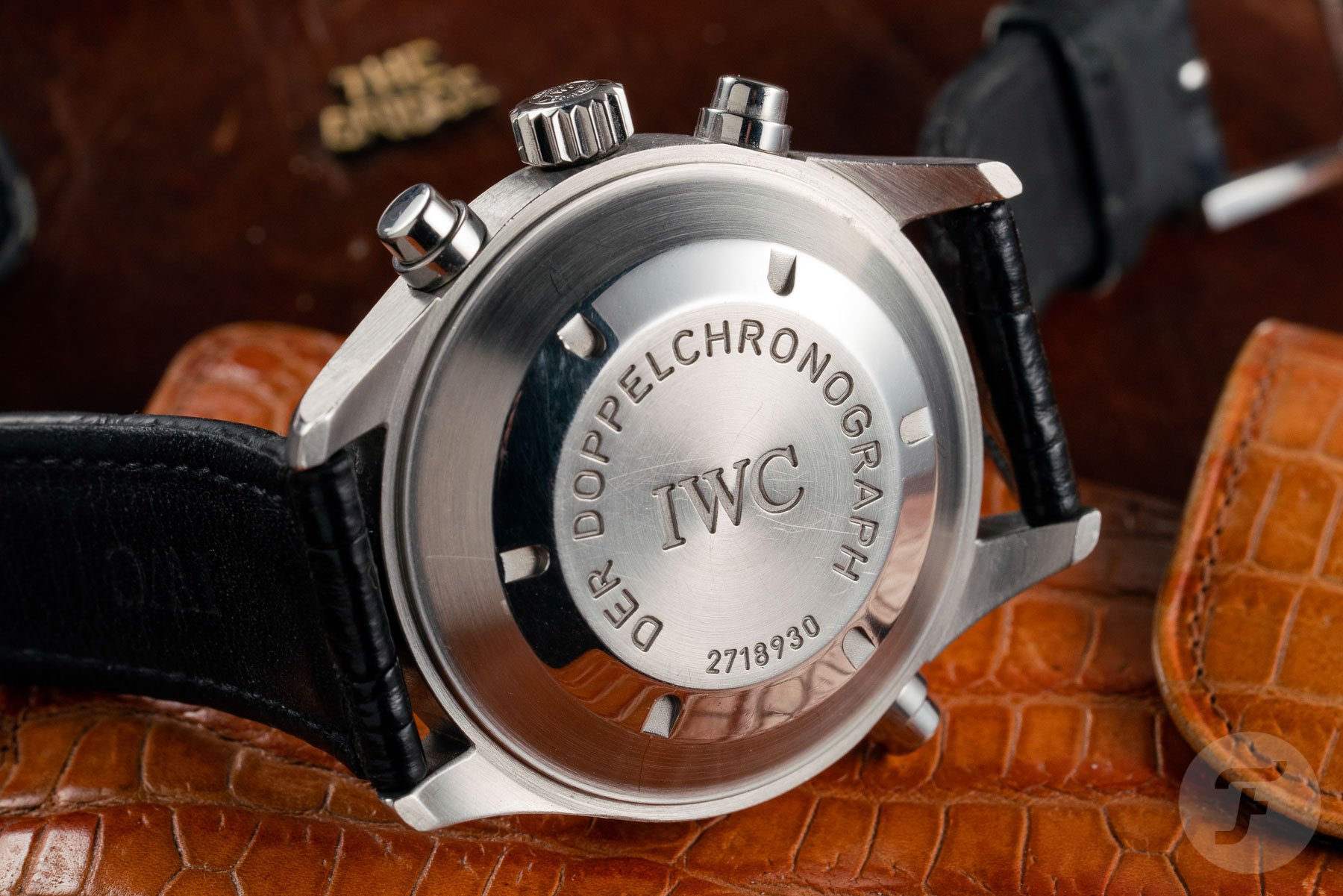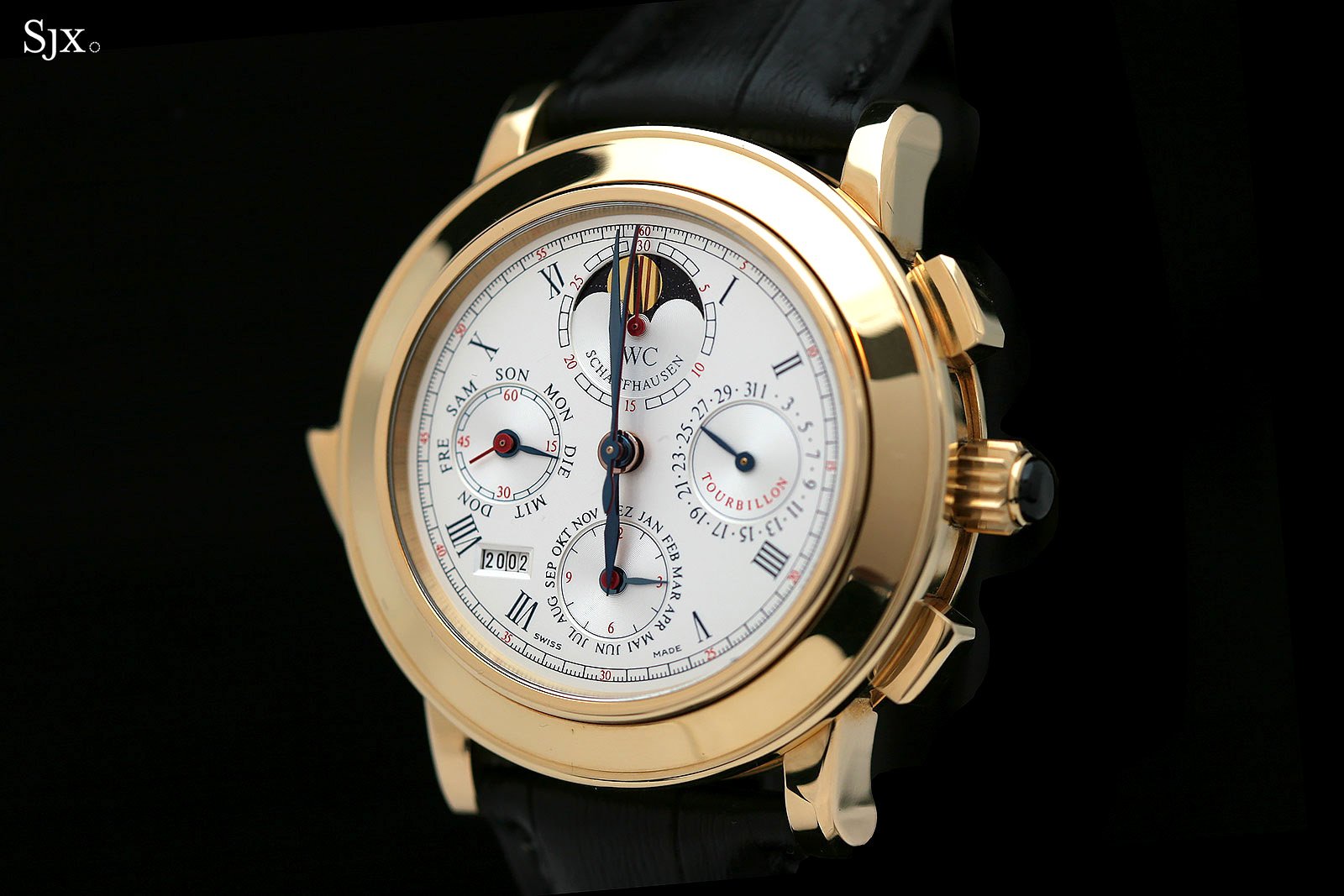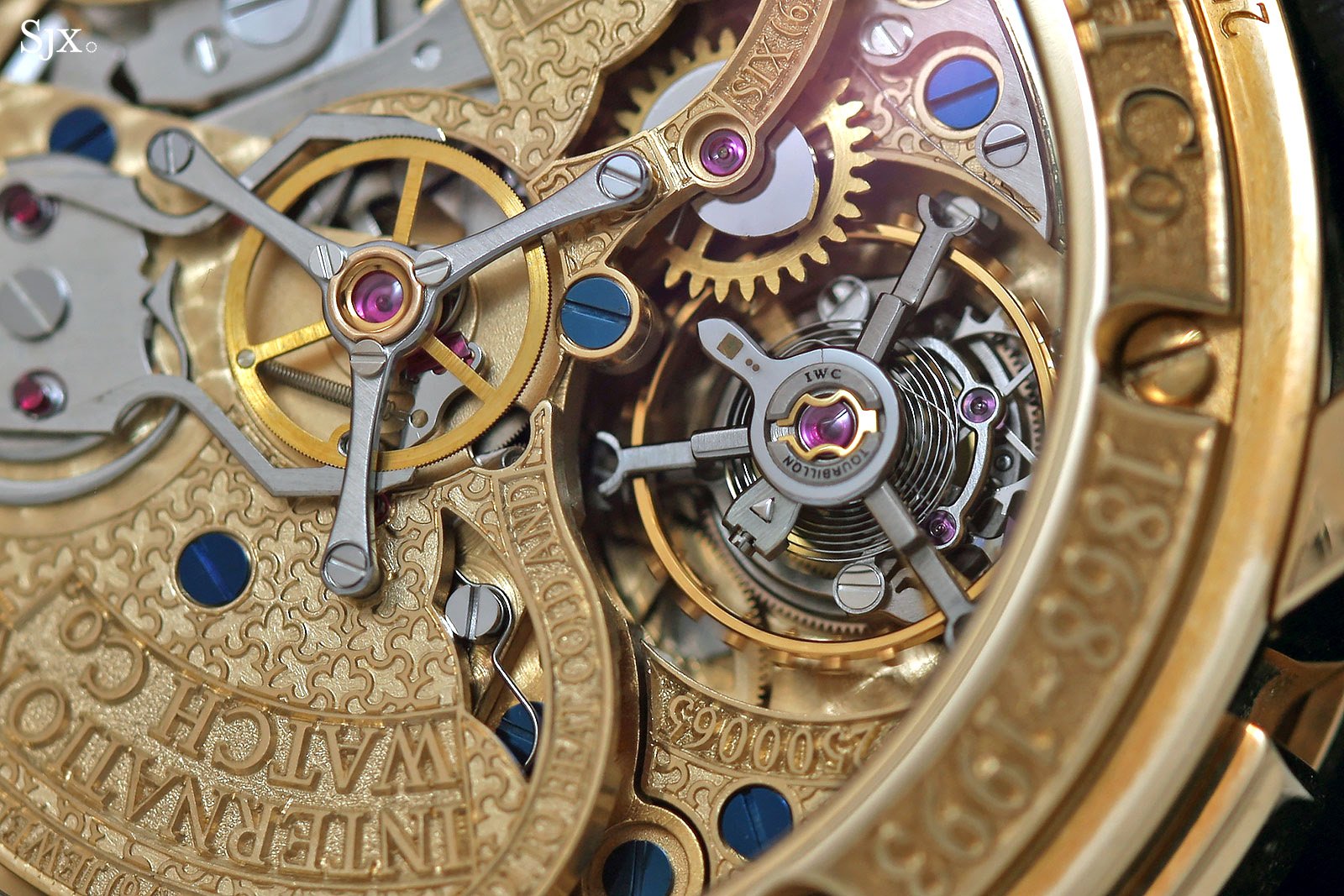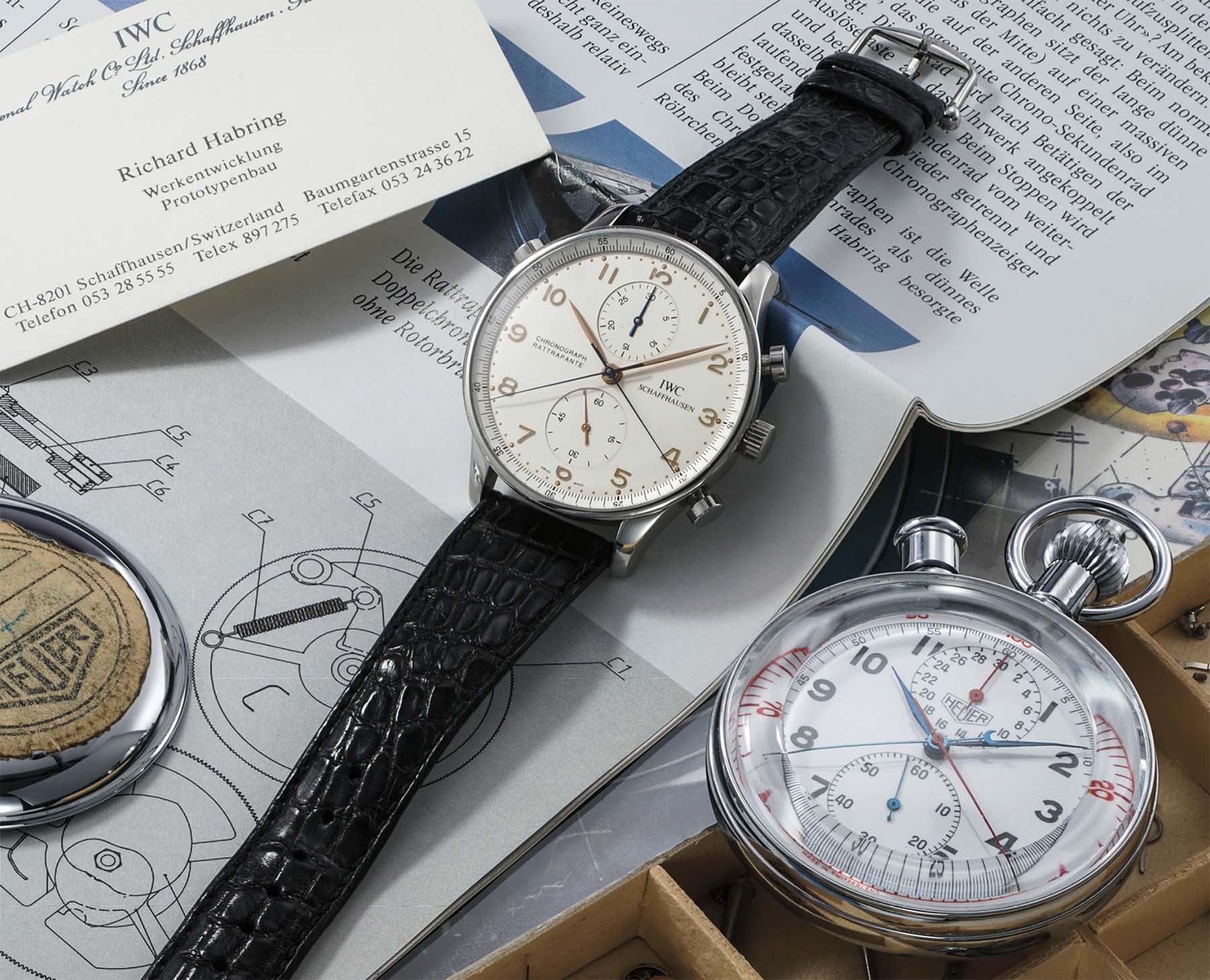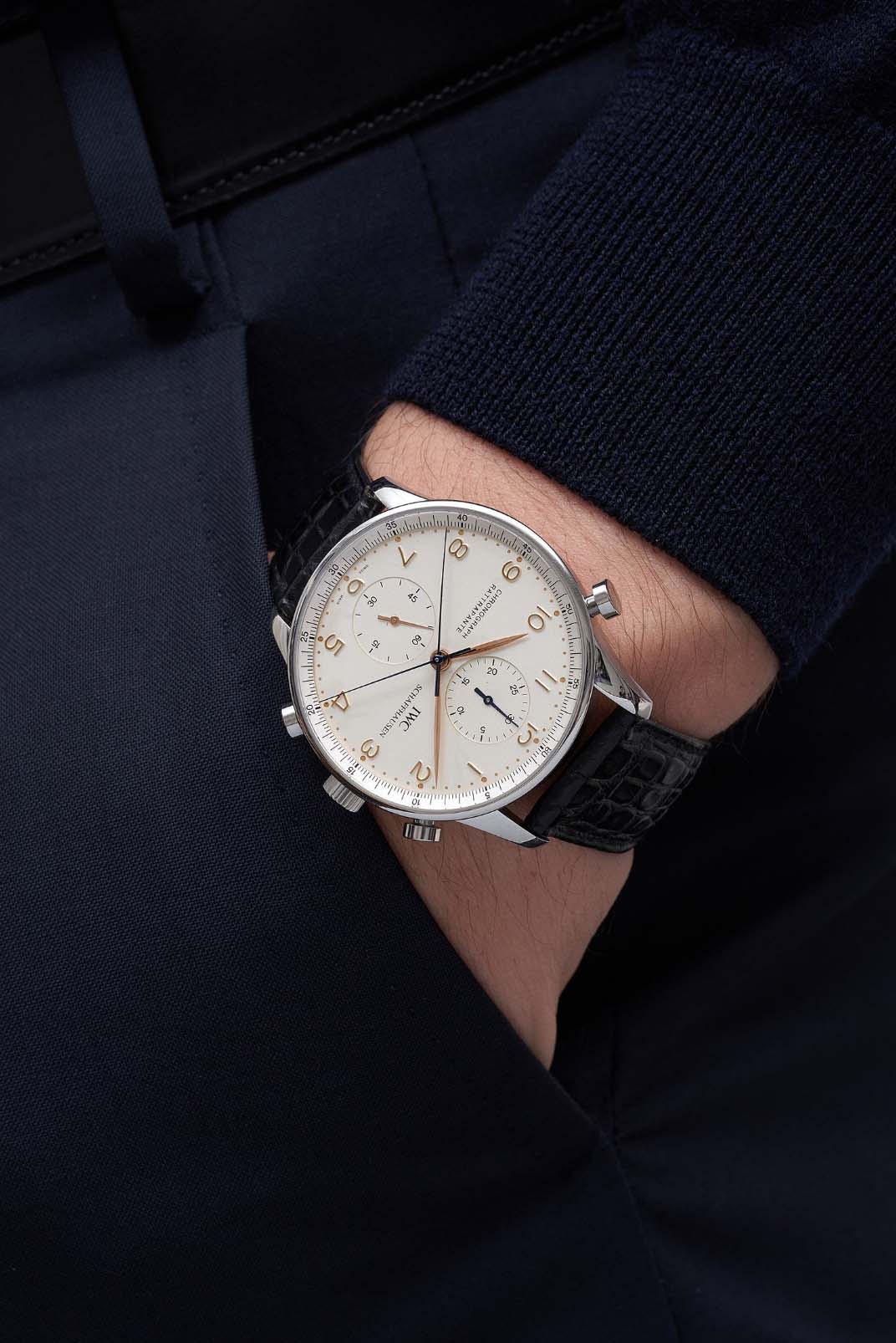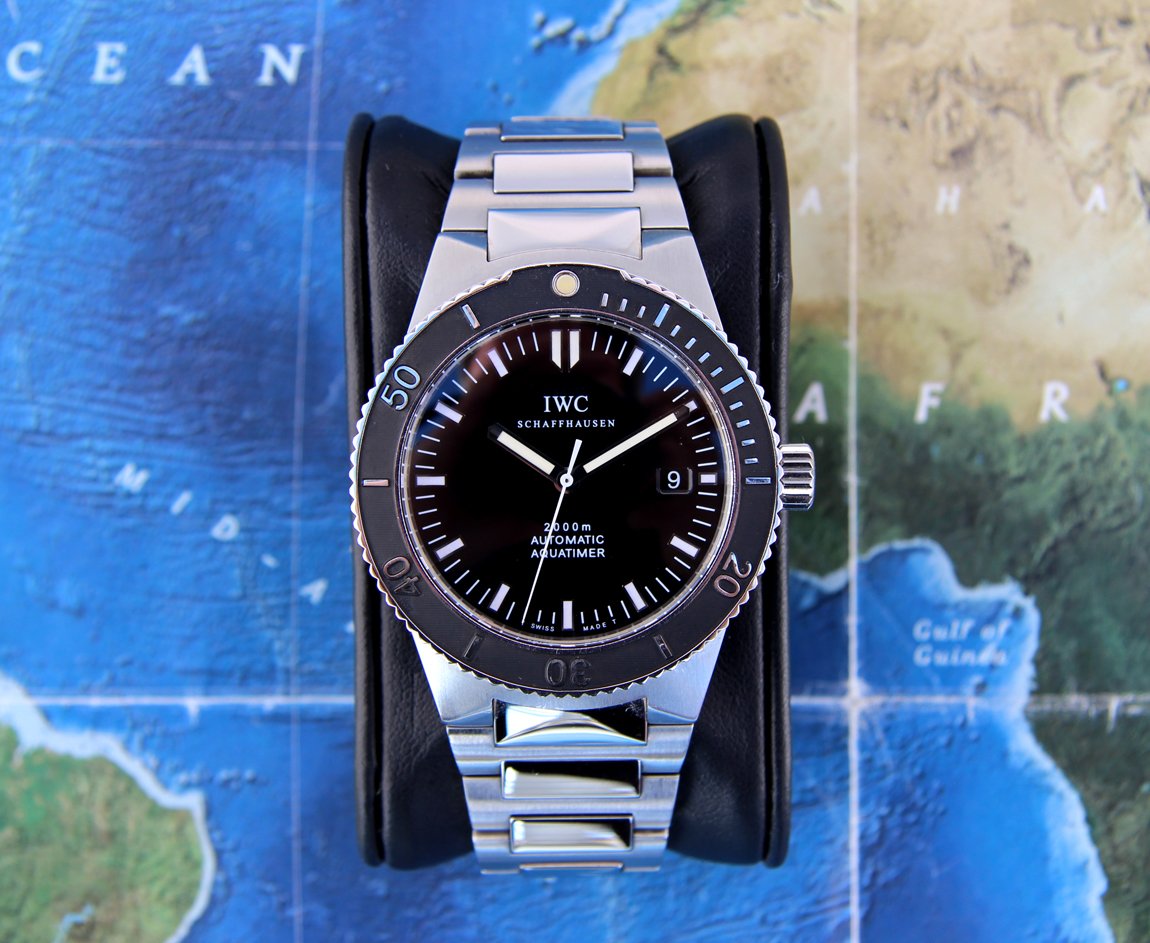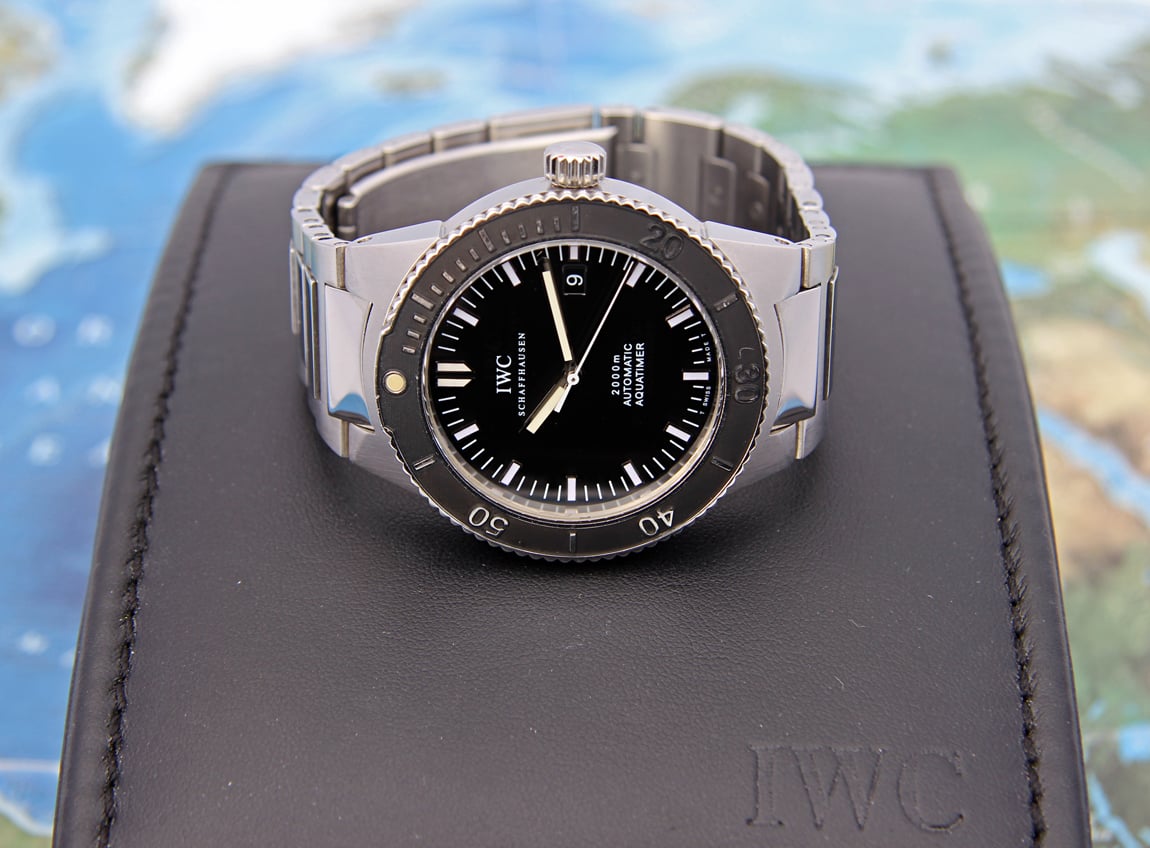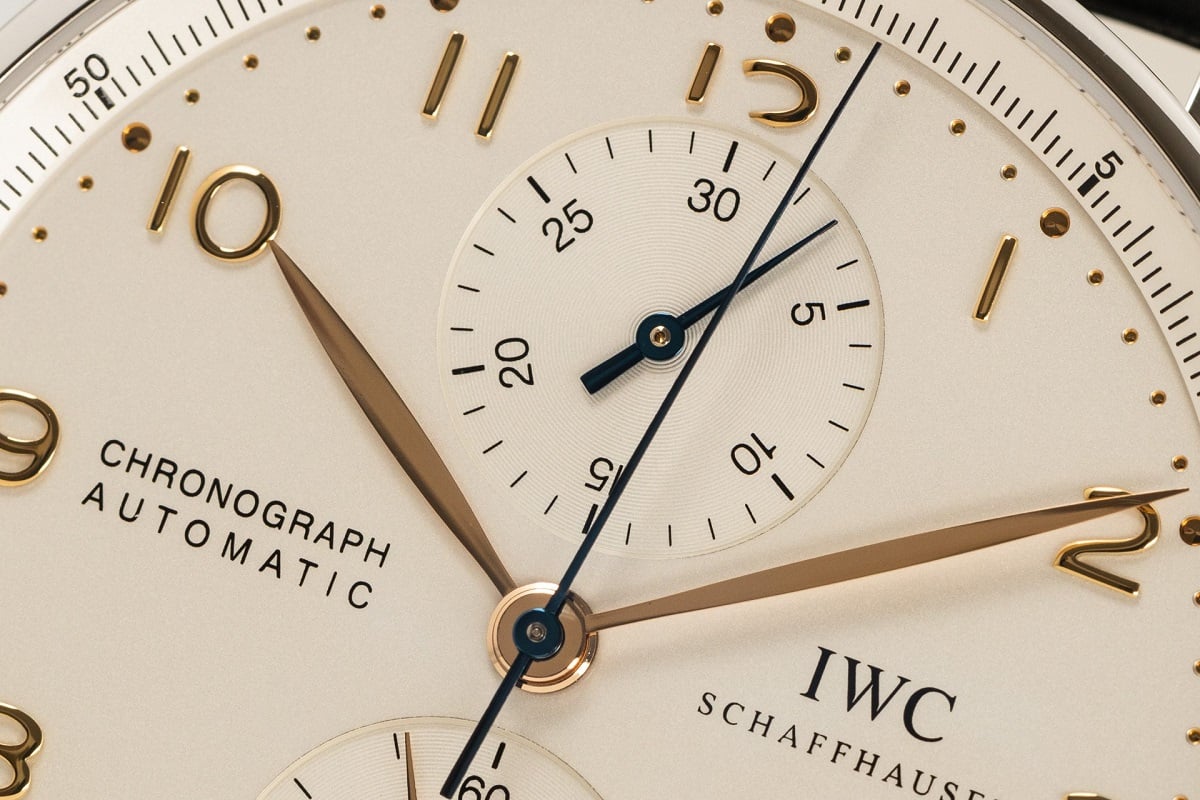Buying Guide: The Best IWC Watches From The 1990s
We like to talk about vintage watches a lot within the Fratello team. Though most of what we write about is primarily focused on the most recent releases and developments, for many of us, a lot of the fun can be found in the sometimes weird and often wonderful world of vintage watches. It’s a world full of history, remarkable watches, incredible stories, and quirky details. It inspired us to come up with a series of articles focusing on the best watches per decade from a select group of brands. Some of them are priceless, some of them still affordable. In this installment, we will take a look at the best IWC watches from the 1990s.
This week we will continue our journey through watch history to find the best watches from the 1990s. As I have mentioned in the previous articles discussing the best watches from the 1980s, mechanical watches slowly started making a comeback in that decade. By the time the 1990s began, quartz was still dominating the watch industry. But you could slowly see the two finding space next to each other.
With the gradual rise in the popularity of mechanical watches, we also saw a shift in perception. Mechanical watches became a luxury statement produced by prestigious brands with centuries of watchmaking history. It set it apart from the mass-produced, cheap and quartz watches. This luxury status was further backed up by a renewed interest in watches that featured classical complications. Combining the rich history in watchmaking and the technical masterpieces set mechanical watches apart from the fast world of quartz watches for good.
IWC in the 1990s
One of the leading brands in developing those technical masterpieces was IWC. The Schaffhausen brand played a pivotal role in showing the world how incredibly captivating mechanical watches could be. Along with brands like Patek Philippe, Blancpain, and Ulysse Nardin, IWC introduced some amazing, complicated watches that became industry icons. One of them will be part of this list. So, in essence, IWC was very important in showing the world some of the best the Swiss watch industry had to offer.
Additionally, the brand introduced some of its most iconic models in the 1990s. With IWC head watchmaker Kurt Klaus leading the development of its watches, IWC took a leading role in the revival of mechanical watchmaking. The Flieger Watches, the Portugieser, the Aquatimer, names that became big in the nineties and still are the collections that define the brand today.
Lastly, the brand also played a leading part in the way watches were created. IWC introduced CAD/CAM technology in 1988, showing that modern technology would play an increasingly important part in watchmaking. Nowadays, it can be hard to imagine that things were completely different a little over 30 years ago. All these things made IWC one of the leading brands of the decade. A decade that brought us some of my favorite IWC watches ever created. Let’s take a look at five of them.
The Entry Point — IWC Mark XII
We start this list off with one of the most iconic from the 1990s. The Mark series is a widely respected line of watches with a lot of history. The Mark XII was introduced in 1993 and continued the Mark X and Mark XI legacy that came before. Most of you will know that IWC was part of the Dirty Dozen that produced the Mark X watches. After Britain declared war on Germany in 1939, the British Ministry of Defence (MoD) commissioned military watches from 12 different manufacturers. The watches had to meet a set of standards and specifications set by the MoD. IWC’s Mark X is one of the most sought-after ones out of the twelve. With only 6,000 pieces ever produced, it’s a true collector’s item. Next to that, it also started one of IWC’s most important collections.
In 1949 IWC introduced the follow-up with the Mark XI. It was intended for pilots and navigators of the Royal Air Force (RAF), Fleet Air Arm (FAA), and Royal Australian Air Force (RAAF). IWC delivered the last Mark XI watches to the RAF in 1953, but it was not officially decommissioned until 1981. The Mark XI was celebrated for its incredibly effective design with three hands and not date display. Inside the 36mm stainless steel case, IWC equipped the watch with their legendary Caliber 89. The combination of the movement and the design turned out to be perfect for that task it was developed for. But after military watches became less popular with all the new watch designs introduced in the decades to follow, it took until the 1990s before we saw the return of the legendary IWC Mark series.
The legend continues
In 1993 IWC introduced the Mark XII that was an homage to the watches that came before. The brand decided to keep the 36mm stainless steel case and the iconic design of the dial. The biggest change to the design came in the form of the date window at 3 o’clock. A second big change came in the form of an automatic movement. The Mark XII IWC was powered by the IWC caliber 884/2 that uses the Jaeger LeCoultre caliber 889/2 as a base movement. It operates at 28,800vph, has 36 jewels, and has a power reserve of 40 hours.
The IWC Mark XII turned out to be the perfect homage to the military watches of the past and the perfect entry-level IWC military watch. On top of that, it was a perfect statement to celebrate the brand’s history from Schaffhausen. But it did so with that overall design that made so many of the IWC military and pilot’s watches so attractive. Finding an IWC Mark XII is not that hard. Prices for one go from just under €3K to €4.5K depending on their condition. There is also a gold option for roughly €6.5K to €7.5K, but who would want a gold military watch? It defeats the purpose of the iconic Mark series altogether.
My pick — IWC Flieger Doppelchronograph ref. 3713
Essentially my pick is actually more like two picks. Or better: two references of the IWC Flieger Doppelchronograph. Why two? Well, both the first reference 3711 introduced in 1992 and its successor, reference 3713, are very much the same watches except for a small number of details. Fellow Fratello team member Lex wrote a great in-depth article about the Doppelchronograph that pretty much explains the love that he and quite a few of the Fratello team members have for this iconic chronograph. Like the Mark XII, it’s a combination of great style and an interesting movement that makes the ’90s “Doppelchrono” a winner.
Judging a watch always starts with good looks. When it comes to chronographs specifically, I always look for visual balance and logical placement of the elements. It’s why I am not the biggest fan of the Valjoux 7750 layout per se. I prefer my chronograph with three registers to be placed at 3, 6, and 9 o’clock. It gives room for the logo to be placed underneath the 12 o’clock spot to create something that feels natural to me. With the 7750-layout, it’s different. But it doesn’t mean it’s a no-go. The watch to best prove that is the IWC Flieger Doppelchronograph. This is one of the absolute best dial designs ever created for a 7750-based chronograph when it comes to readability. The visual balance is top-notch, making it easy to use and an overall joy to look at.
Domed sapphire and tritium?
As Lex explained in his article, there are two main differences between the two references. The first was the ref. 3711 that came in 1992 with a domed sapphire crystal and used tritium on the dial. The ref. 3713 followed in 1996, and the tritium was replaced SuperLumiNova for the stick hands and markers. Additionally, IWC equipped the watch with a flat sapphire crystal. Some transitional models had a flat sapphire but came with tritium like the one you see pictured here. The ref. 3713 was discontinued in 2005 and replaced by a Spitfire model that, in my opinion, is a lot less attractive.
Inside the 42mm case, you will find the IWC Cal. 79230. It used the Valjoux 7750 as a base movement, and added to it is an innovative split-seconds chronograph designed by Richard Habring. It combines the refinement of the split-seconds chronograph mechanism with the sturdiness of the Valjoux 7750, making the Doppelchronograph perfect for daily wear. Which it still is even almost thirty years after it was first introduced. When we had a chance to wear the IWC Flieger Doppelchronograph ref. 3713 in the office, I was reminded how great that watch is. Finding a ref. 3711 or ref. 3713 is not hard. Expect to pay between €4.5k and €6K for one, which is affordable for such an amazing classic.
Money is no object #1 — IWC Il Destriero Scafusia ref. IW1868
Next on the list is one of the most iconic watches ever produced. Just the name Il Destriero Scafusia, Latin for “The Warhorse from Schaffhausen,” and a set of images should tell you all you need to know. When I first got into watches in my mid-twenties, this watch had already been out for a decade. But still, people were talking about it quite regularly because it was such an impressive horological masterpiece. And it still is. When the IWC Il Destriero Scafusia was released in 1993, it was the most complicated watch in the world. It was part of a bigger Grande Complication race that took place in the late ’80s to mid-’90s. When Günther Blümlein took the helm in 1985, he wanted to show that IWC could enter the world of complicated watches.
Blancpain released the iconic 1735 in 1989. At that time, it was the most complicated wristwatch in the world. It featured a tourbillon, minute repeater, perpetual calendar, split-seconds chronograph. Blümlein wanted to top that and do so in a smart, cost-effective, and robust way. The first result came in the form of the IWC Grande Complication: a stunning automatic chronograph with a perpetual calendar and minute repeater. But that’s not where it ended. For IWC’s 125th anniversary, Blümlein wanted to create something even more impressive. The Il Destriero Scafusia was gloriously introduced as the most complicated watch ever produced in 1993. The watch featured a rattrapante chronograph, flying tourbillon, perpetual calendar with four-digit year display, and minute repeater.
The magic is on the backside
For the Il Destriero Scafusia, IWC developed the hand-wound cal. 18680. Just as with the Grande Complication, the brands used the Valjoux 7750 as the base movement. In all honesty, when you look closer at the movement, it is hard to recognize the initial movement that was used. The heavily adjusted movement only featured elements of the gear train and chronograph mechanism from the Valjoux 7750. The watch featured specially made complications. For the minute repeater of the Grande Complication, IWC had already had help from Renaud & Papi. Richard Habring designed the split-seconds chronograph used for the Doppelchronograph so that it could also be integrated. Additionally, Habring also created the tourbillon construction with its titanium cage specifically for the Il Destriero Scafusia.
The Il Destriero Scafusia features a display case back that allows you to stare in amazement at the movement. The gilded parts are finished in a stunning relief motif with an incredible amount of detail. On top of that, I also love the relatively toned-down dial design and the 44mm yellow gold case shape. Overall this is more than just a great IWC watch. This is one of the most important and iconic watches of the 1990s. IWC produced a total of 125 pieces, with the last being delivered in 1999. Finding one nowadays is possible as they show up for sale sometimes. Expect to pay around €150K for this incredible masterpiece that, for me, is undoubtedly one of the most important watches of the decade.
Money is no object #2 — IWC Portugieser Rattrapante ref. 3712
This list would not be complete without an IWC Portugieser. Most of you will probably know the story that IWC legend Kurt Klaus told about bringing back the Portugieser. In the early nineties, a client was visiting the atelier, and he was wearing a vintage Portugieser from the 1930s. When Klaus and his colleagues spotted the watch, they loved how good it looked and decided to make a new Portugieser. The result came in the form of the limited-edition Portugieser ref. 5441 that was unveiled for the company’s 125th anniversary. This reintroduction of the IWC classic was limited to 1,750 pieces and universally praised. The next Portugieser that was released was another limited edition. In 1995 the brand released the Portugieser Minute Repeater ref. 5240 limited to 550 pieces — 50 in platinum, 250 in rose gold, and 250 in yellow gold.
While these two limited released were great watches, it wasn’t until the IWC Portugieser Rattrapante ref. 3712 was introduced in 1995 that we saw the first model that had the looks that made the modern Portugieser a big hit. Three years later, the automatic Portugieser Chronograph ref. 3714 followed that became IWC’s biggest selling watch to date. I love the ref. 3714 as it’s such a clean, stylish, and well-designed chronograph. For a long time in the early 2000s, that was one of my absolute favorites. But the first model that started the success of the modern Portugieser was the Rattrapante ref. 3712 and why I picked it for this list. By the way, the watch in the pictures is Richard Habring’s prototype that was auctioned by Philips earlier this year.
Style and Substance
What makes this Portugieser Rattrapante ref. 3712 such an incredible watch combines those stylish looks and the incredible hand-wound IWC Caliber 76240. The latter is what got the watch incredible praise. It’s another creation of Richard Habring based on a Valjoux movement. The base for this Caliber 76240 was the Valjoux 7760, the hand-wound version of the Valjoux 7750. Habring added the split-seconds module to create the final movement. As you can see on the Flieger Doppelchronograph as well, the Portugieser Rattrapante has an extra pusher at 10 o’clock, activating the rattrapante function. As a result of Habring’s work, a split-seconds chronograph — usually incredibly hard and costly to produce — was made accessible to a wider audience.
The watch was first introduced with a 41mm stainless steel case and white dial with gold hands and numerals. Other case materials and dial configurations followed soon after. What I love about the design of the Portugieser is its clean design. The attraction of the white dial with its gold elements is stylish in an almost minimalist way. I especially love the style of the Arabic numerals. It’s hard to come across a better font for a watch dial, in my opinion. Writing this article reminded me how much I love the looks of the Portugiesers that were introduced in the 1990s. The watch that started it was this ref. 3712. Finding one is easy as it was in production for 11 years. Expect to pay roughly between €5K and €8K for one depending on its condition. In short, that will buy you a modern icon.
Money is no object #3 — IWC GST Aquatimer ref. 3536
The last watch on this list is another iconic watch from the 1990s. In 1997 IWC unveiled the GST-line (Gold, Steel, and Titanium) of watches. This line of sports watches featured one of my all-time favorite IWC watches that I will discuss in the next installment of IWC’s most iconic models of the 2000s. But at Baselworld in 1998, IWC introduced the IWC GST Aquatimer ref. 3536. With this watch, IWC added a serious diving watch to the GST line. The watch was a competitor for heavy hitters like the Rolex Submariner and the Omega Seamaster. The watch came in three different versions; two steel models and a titanium version. The two steel models differed in dial execution, with the first being my pick with a black dial and white markers. The second steel model came with a silvered dial with gold elements.
While I love the titanium model with its almost stealthy appearance in brushed titanium, I prefer the stainless steel model. What stands out most is that the design of the watch hasn’t aged a day. It still is as up-to-date as it was over two decades ago. The watch came with a 42mm stainless steel case and a beautifully designed bracelet that featured a mix of polished and brushed steel parts. Another great element is the steel bezel with anodized black elapsed time inlay. The unidirectional rotating bezel can only be turned counter-clockwise when it is pressed down at two opposite points. It’s an overall very well-designed watch.
Two lume colors
If you look at the pictures closely, you will see two different lume colors. At the time, IWC used two different kinds of lume. For the GST Aquatimer, the hands, the 12 o’clock index, and the lume pip on the bezel were coated with tritium. For all the other indices, IWC decided to use Super-LumiNova. It gives the watch a certain charm that might not appeal to everyone, but I genuinely like it. Inside the 42mm case, IWC equipped the watch with their IWC Caliber 37524. Essentially, it is a heavily modified ETA Caliber 2892-A2 that operates at 28,800vph, has 21 jewels, and has a 42-hour power reserve.
Overall the IWC GST Aquatimer ref. 3536 is a great-designed diving watch that still looks very much like a modern watch. If you start searching for these, you will find that the titanium model is more popular than the steel model. It makes the steel version somewhat of a rarity. Expect to pay roughly between €4K and €5.5K for one. The titanium version goes for roughly the same price. While the titanium model distinguishes itself more from its competitors and therefore is mode unique, it will all come down to your personal preference of which of the two is your favorite. But with the GST Aquatimer, IWC proved once more that the brand released some amazing-looking watches in the 1990s.
Final Thoughts
I can only cover a few of the great number of classics that IWC produced in this decade. When it comes to IWC, there is an incredibly rich world of different models and references to discover. Especially the 1990s were an amazing time for the brand with so many great introductions. It makes the nineties the absolute golden era for the brand for me. I could have easily picked another five models for this list that I love. With Günther Blümlein, Kurt Klaus, and Richard Habring, the brand had some industry giants on board that created some of the best watches of the decade and propelled IWC into the forefront of the watch industry.
If you want to find out more about IWC, there are plenty of books and websites that can help you get an idea of the brand’s rich history. One of the books is IWC Schaffhausen: Engineering Time Since 1868 by Manfred Fritz, Paulo Coelho and Enki Bilal. Additionally, the brand also has its own IWC collector’s forum that you can subscribe to. Finally, there is the active community at WatchUSeek that also has its own dedicated IWC brand forum.
We’ll be back with a new installment next week. In the meantime, let us know what your favorite IWC watches from the 1990s are in the comments section below!

